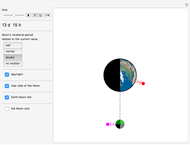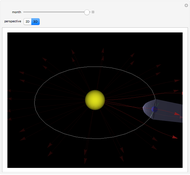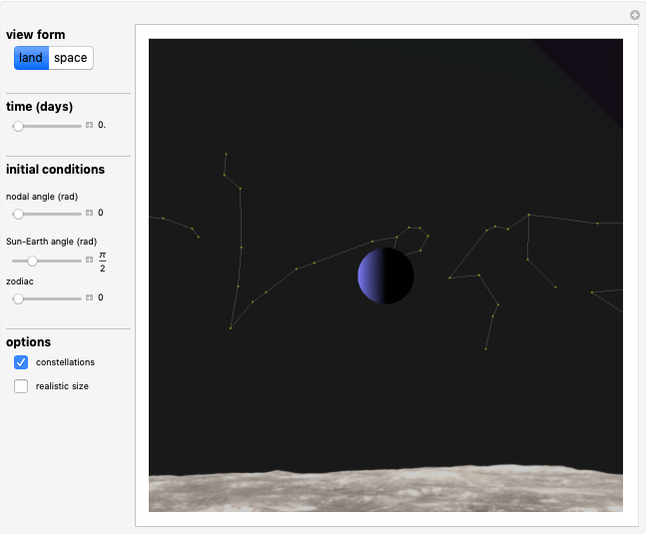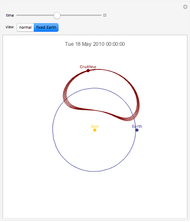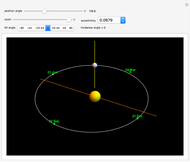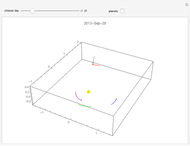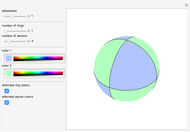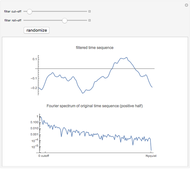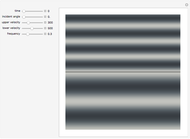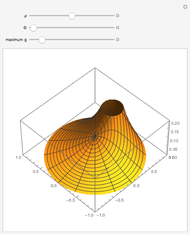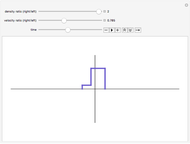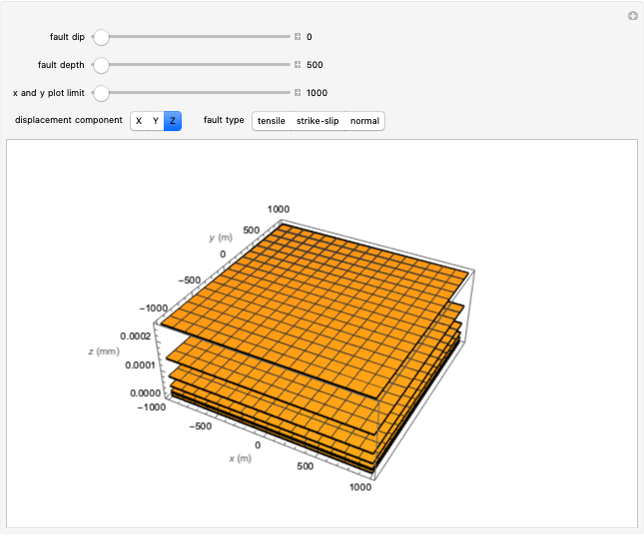Precession of the Earth's Axis

Requires a Wolfram Notebook System
Interact on desktop, mobile and cloud with the free Wolfram Player or other Wolfram Language products.
Every calendar year, the winter solstice occurs at a slightly different point on the Earth's orbit around the Sun. The same is true for the summer solstice, or either of the equinoxes. This is due to the "precession" of the Earth's axis, which has a period of 25,772 years. After half that period, or 12,886 years, the winter solstice occurs when the Earth is at a point on its orbit opposite that of 12,886 years earlier. The night sky for a given day of the calendar year is changed significantly throughout the 25,772-year period of precession. The Earth's orbit around the sun is elliptical, with a very small eccentricity.
[more]
Contributed by: David von Seggern (July 2015)
(University of Nevada)
Open content licensed under CC BY-NC-SA
Snapshots
Details
References
[1] Wikipedia. "Axial Precession." (Jul 13, 2015.) en.wikipedia.org/wiki/Axial_precession.
[2] The United States Naval Observatory. "The Seasons and the Earth's Orbit." (Jul 13, 2015.) aa.usno.navy.mil/faq/docs/seasons_orbit.php.
[3] NOAA Paleoclimatology. "Orbital Dynamics." (Jul 13, 2015.) www.ncdc.noaa.gov/paleo/ctl/clisci100ka.html.
Permanent Citation









